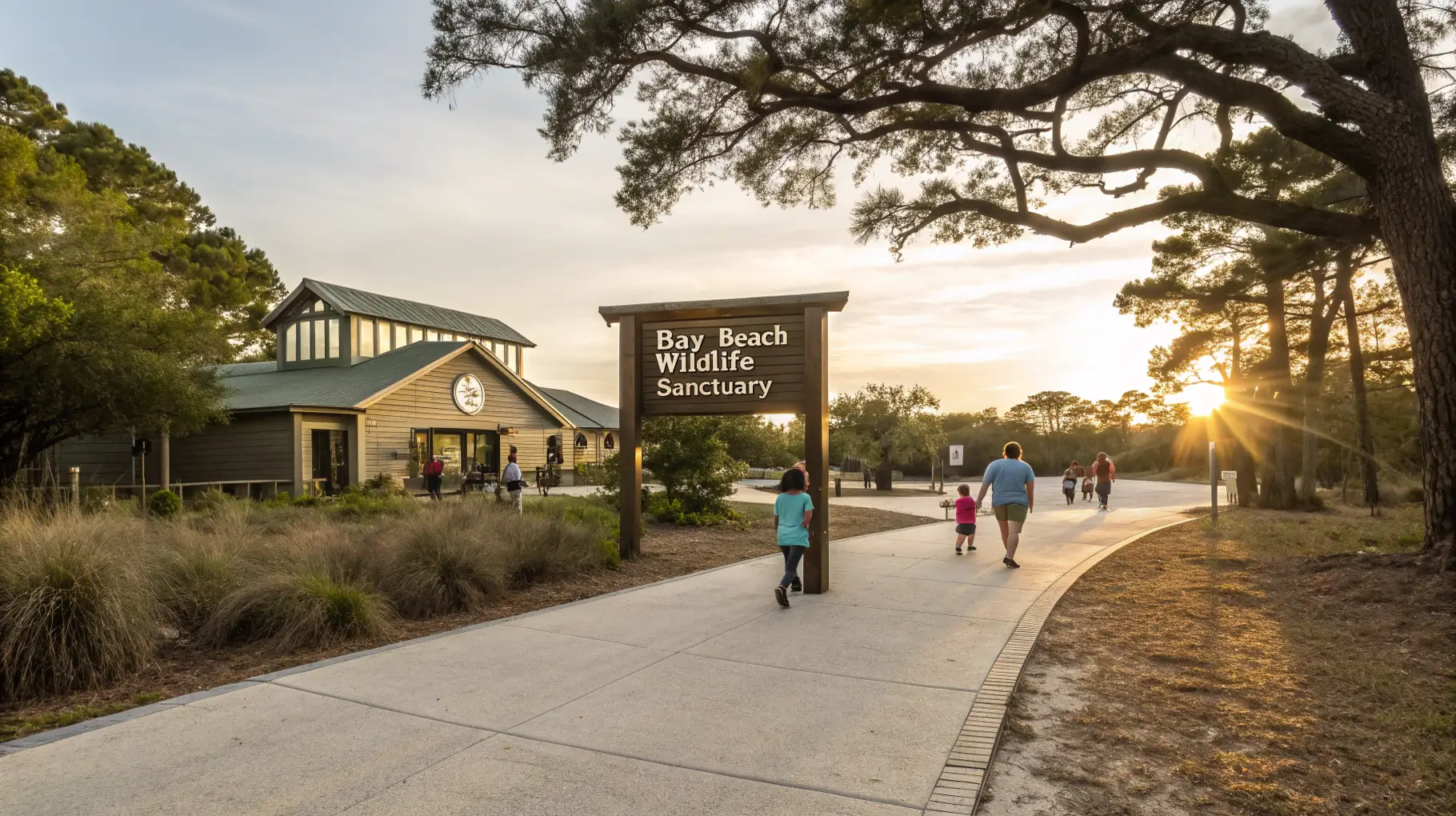Introduction: Discover Green Bay’s Natural Treasure
Hidden in plain sight alongside the bustling Bay Beach Amusement Park, Bay Beach Wildlife Sanctuary stands as one of Green Bay’s most remarkable natural destinations. This 700-acre sanctuary offers visitors a rare opportunity to observe native Wisconsin wildlife in their natural habitats—completely free of charge.
Far from your typical zoo experience, bay beach wildlife sanctuary green bay provides an immersive encounter with nature where wolves, cougars, eagles, and dozens of other species thrive in spacious, natural environments. Whether you’re a nature photographer, bird enthusiast, or family seeking an educational outdoor adventure, this sanctuary delivers an unforgettable experience.
In this comprehensive guide, we’ll cover everything you need to know for a perfect visit: essential planning information, what wildlife you’ll encounter, trail recommendations, seasonal considerations, and insider tips I’ve gathered through countless visits to this remarkable Green Bay attraction.
Table of Contents
Planning Your Visit: The Essentials
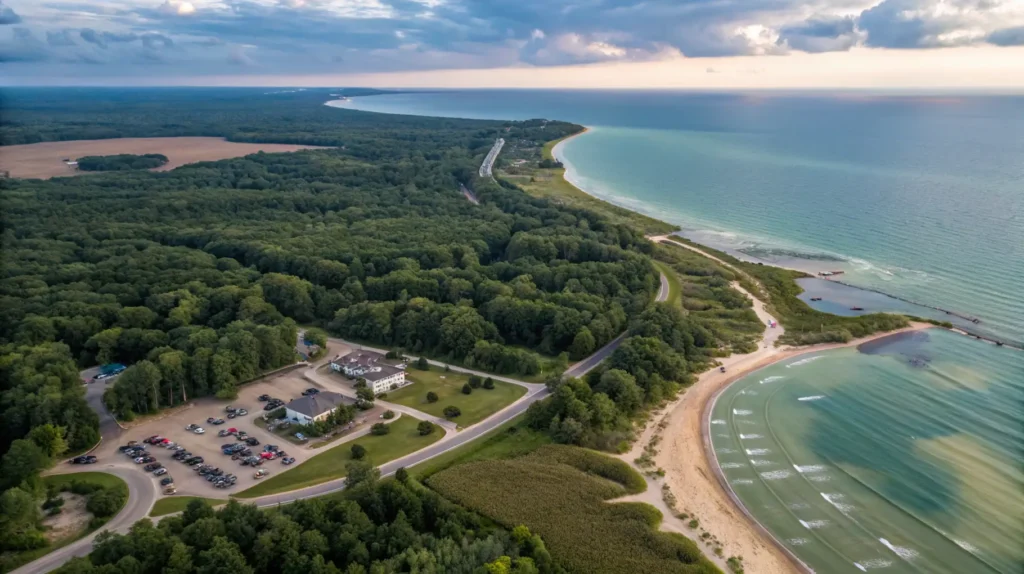
What IS Bay Beach Wildlife Sanctuary?
Bay Beach Wildlife Sanctuary serves as both a rehabilitation facility and a permanent home for native Wisconsin animals that cannot be released back into the wild. Operated by Brown County Parks, the sanctuary’s mission extends beyond animal care to include education, conservation, and wildlife research.
The facility houses over 255 animals representing 75 different species, from majestic gray wolves to tiny screech owls. What sets this sanctuary apart is its commitment to providing animals with spacious, naturalistic habitats that mirror their wild environments.
Location, Hours & Admission
Address: 1660 E Shore Dr, Green Bay, WI 54302
Getting There:
- From I-43: Take Exit 187 (Webster Ave/Bay Beach Park), head east toward Lake Michigan
- From downtown Green Bay: Follow Webster Avenue east for approximately 5 miles
- GPS Coordinates: 44.5307° N, 87.9815° W
Hours:
- January-February: 9:00 AM – 4:00 PM daily
- March-April: 9:00 AM – 5:00 PM daily
- May-August: 9:00 AM – 6:00 PM daily
- September-October: 9:00 AM – 5:00 PM daily
- November-December: 9:00 AM – 4:00 PM daily
Note: Always check the official bay beach wildlife sanctuary green bay website for current hours and any temporary closures due to weather conditions or special events.
Admission:
- FREE for all visitors
- Donations are gratefully accepted at the Nature Education Center
- Consider supporting the sanctuary’s mission through their adoption program or gift shop purchases
Parking:
- Ample free parking available in paved lots
- Two main parking areas: one at the Nature Education Center entrance, another at the beach/trail access
- Peak times (weekends, holidays): Arrive early (before 10 AM) for best parking spots
- Overflow parking available during busy periods
Best Time to Visit
Seasonal Considerations:
| Season | Highlights | Considerations |
|---|---|---|
| Spring (March-May) | Active animals after winter, bird migration, wildflowers | Muddy trails, variable weather |
| Summer (June-August) | All trails accessible, active wildlife, perfect weather | Crowded on weekends, early morning visits recommended |
| Fall (September-November) | Fall foliage, comfortable temperatures, less crowded | Some animals less active during Indian summer |
| Winter (December-February) | Wolves more active, winter bird species, snowy landscapes | Limited trail access, dress warmly |
Time of Day Tips:
- Early Morning (8:30-10:30 AM): Most active animal behavior, fewer crowds, better photography lighting
- Late Afternoon (4:00-6:00 PM): Second burst of animal activity, golden hour photography
- Midday: Typically least active time for animals, but comfortable for trail walking
Weekday vs. Weekend:
- Weekdays: Significantly less crowded, better wildlife viewing opportunities, more peaceful experience
- Weekends: Family-friendly atmosphere, slightly more structured activities, busier parking
Accessibility
bay beach wildlife sanctuary green bay prioritizes accessibility for all visitors:
- Paved Trails: Approximately 2.5 miles of fully accessible, paved pathways
- Boardwalks: Elevated viewing areas accessible to wheelchairs and strollers
- Nature Education Center: Fully accessible building with elevator, accessible restrooms
- Parking: Designated accessible parking spaces near main entrances
- Assistance: Staff available to provide accommodation information
Key Rules At-a-Glance
Essential Guidelines:
- ❌ No Pets Allowed (service animals permitted)
- ❌ No Feeding Wildlife (except approved duck/goose corn at designated areas)
- ✅ Stay on Marked Trails at all times
- ✅ Quiet Voices to avoid disturbing animals
- ✅ Flash Photography Permitted in most areas
- ✅ Picnics Welcome in designated areas
The Experience: What to See & Do
Wildlife & Animal Habitats
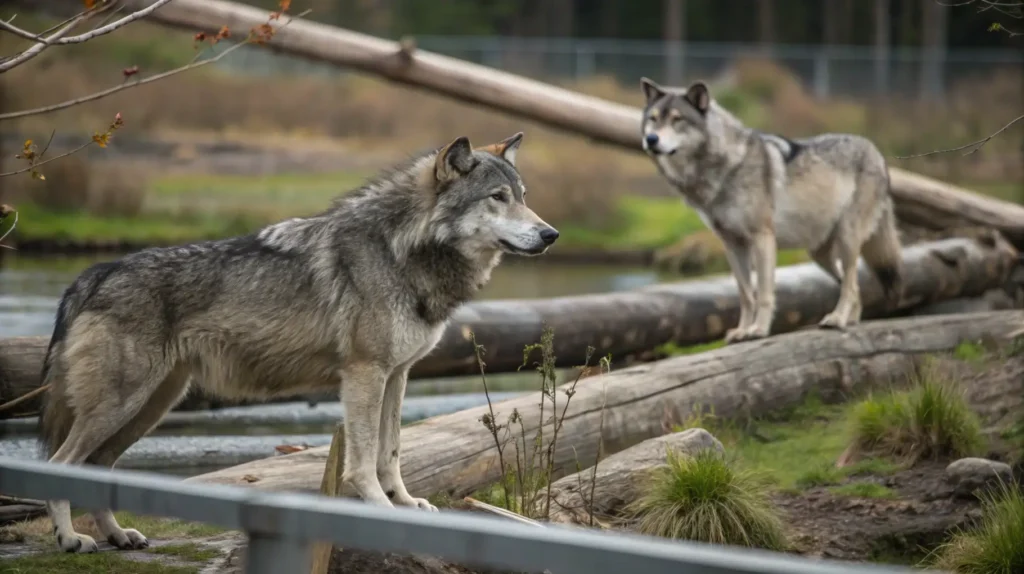
bay beach wildlife sanctuary green bay diverse collection represents the rich wildlife heritage of Wisconsin and the Great Lakes region.
Gray Wolves
The Stars of the Sanctuary
The wolf habitat houses a pack of gray wolves in a spacious, naturalistic environment. These magnificent predators are most active during cooler parts of the day.
- Best Viewing Times: Early morning, late afternoon, overcast days
- Viewing Tips: Patience is key—wolves often rest during midday
- Photography Advice: Use a telephoto lens; flash is permitted but not necessary
Mountain Lions (Cougars)
Silent Predators
Two mountain lions call the sanctuary home, showcasing the power and grace of North America’s second-largest cat.
- Notable Behaviors: Climbing on elevated platforms, stalking behaviors during feeding times
- Activity Patterns: More active during temperature extremes (very hot or cold days)
Native Birds of Prey
Raptors in Rehabilitation
The sanctuary houses various hawks, eagles, owls, and falcons—many recovering from injuries or permanent disabilities.
- Highlights: Bald eagles, red-tailed hawks, great horned owls, screech owls
- Educational Opportunities: Flight demonstrations during special events
- Best Spots: Raptor row near the education center
Other Mammals
Supporting Cast
- White-tailed Deer: Often visible grazing in open areas
- River Otters: Playful and active, especially around their pond
- Red Fox: Elusive but occasionally spotted on trails
- Sandhill Cranes: Tall, elegant birds often standing motionless in wetland areas
Hiking & Walking Trails
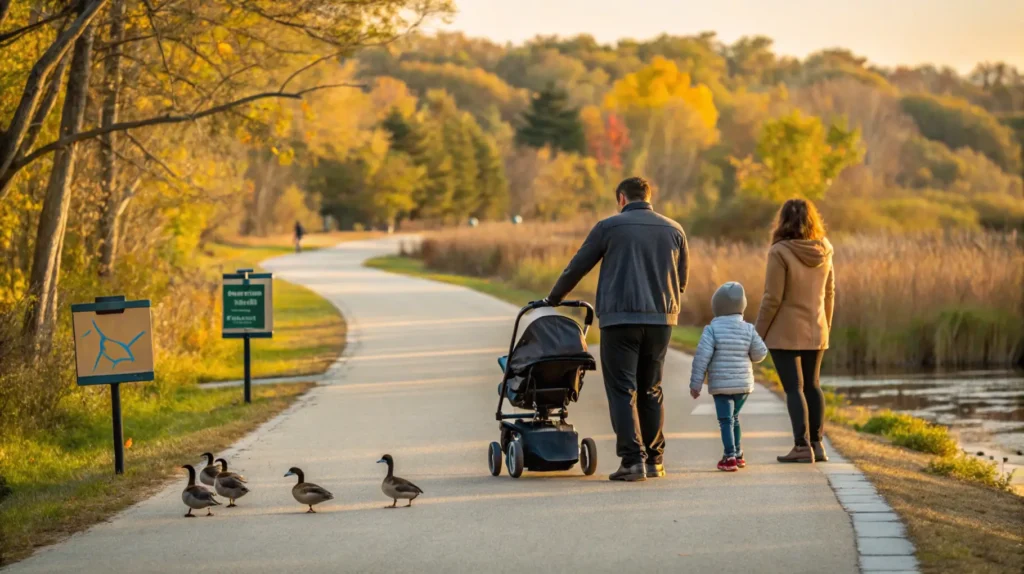
bay beach wildlife sanctuary green bay offers approximately 4 miles of trails through diverse habitats.
Trail System Overview
| Trail Name | Length | Surface | Difficulty | Best For |
|---|---|---|---|---|
| Lagoon Trail | 0.8 miles | Paved | Easy | Strollers, wheelchairs |
| Forest Trail | 1.2 miles | Natural/Boardwalk | Easy-Moderate | Nature observation |
| Dune Trail | 0.5 miles | Sand/Boardwalk | Moderate | Beach access |
| Bay Shore Trail | 1.5 miles | Mixed | Moderate | Lake Michigan views |
Detailed Trail Descriptions
Lagoon Trail: Your introduction to the sanctuary, this fully paved path winds past major animal exhibits and the lagoon where waterfowl congregate. Perfect for families with young children or visitors using mobility aids.
Forest Trail: Experience the sanctuary’s diverse ecosystems on this partially paved trail that transitions into elevated boardwalks through wetland areas. Wildlife viewing opportunities increase significantly along this quieter route.
Dune Trail: Connect to Lake Michigan’s shoreline through this sandy path that demonstrates the unique dune ecosystem. Seasonal wildflowers and migrating birds make this trail particularly special.
Bay Shore Trail: The longest continuous trail offers stunning Lake Michigan views while passing through various habitats. Morning fog often creates ethereal photography opportunities along this route.
Bird Watching Paradise
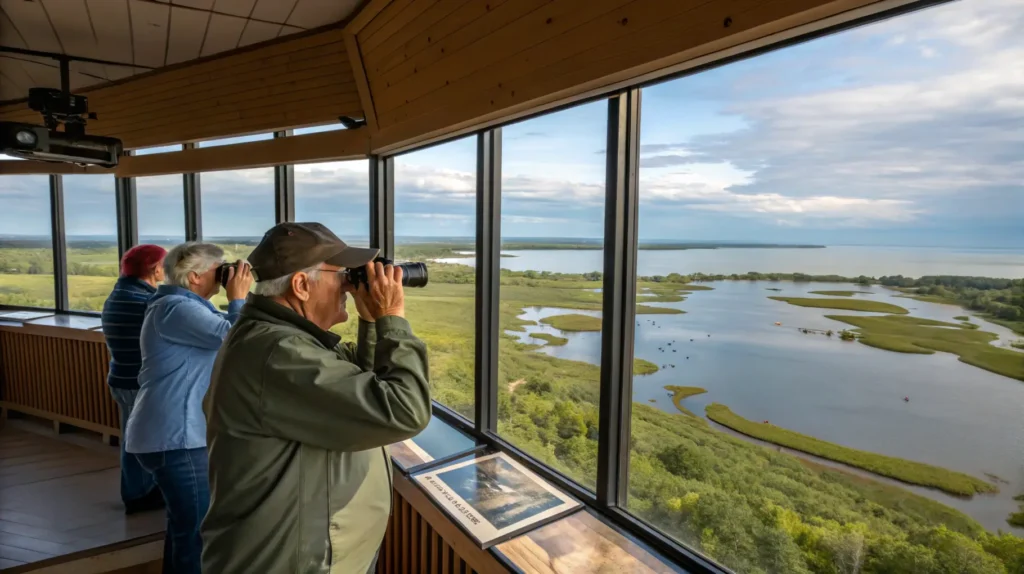
Bay Beach Wildlife Sanctuary ranks among Wisconsin’s premier birding destinations.
Prime Birding Locations
Observation Tower
- 30-foot structure offering panoramic views
- Best for: Hawks, eagles, migrating waterfowl
- Accessible via elevator
Shoreline Areas
- Mudflats attract shorebirds during migration
- Best seasons: Spring (April-May), Fall (August-October)
Lagoon Systems
- Year-round waterfowl habitat
- Species: Herons, egrets, various ducks, geese
Seasonal Bird Calendar
Spring Migration (March-May)
- Warblers, vireos, flycatchers
- Peak: Late April to mid-May
Summer Residents (June-August)
- Breeding waterfowl, shorebirds
- Young bird observations
Fall Migration (August-October)
- Largest variety of species
- Peak: Mid-September
Winter Residents (November-February)
- Rough-legged hawks, snow buntings
- Cold-hardy waterfowl
The Nature Education Center
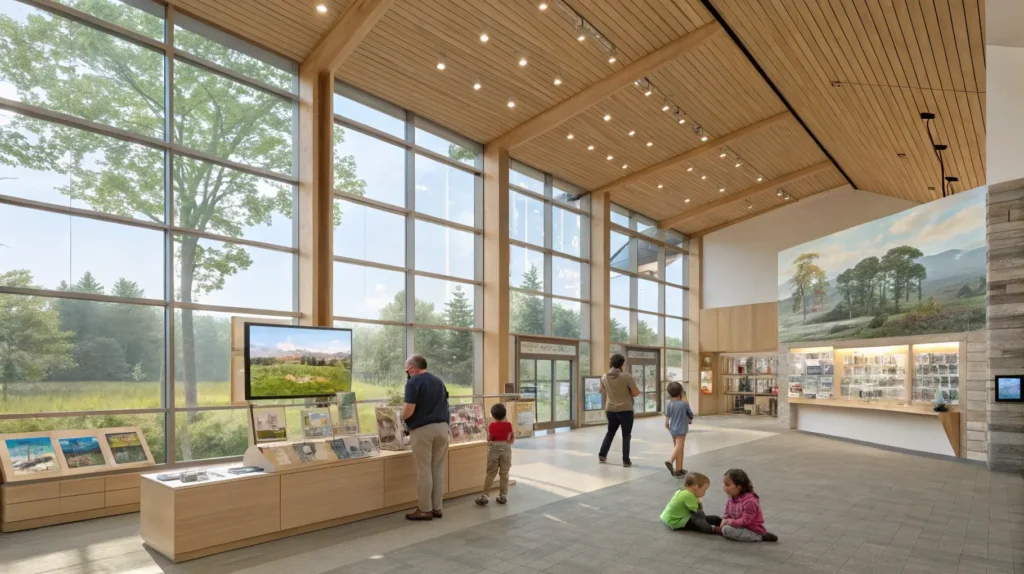
The state-of-the-art Nature Education Center serves as your gateway to understanding the sanctuary’s mission.
What’s Inside
- Interactive Exhibits: Hands-on displays about Wisconsin ecosystems
- Educational Programs: Regularly scheduled presentations
- Gift Shop: Support conservation while finding unique souvenirs
- Information Desk: Knowledgeable staff ready to answer questions
- Restrooms: Clean, fully accessible facilities
- Climate Control: Year-round comfort for visitors
Feeding the Waterfowl Experience
One of the sanctuary’s most popular family activities involves feeding the ducks and geese in the lagoon.
The Process
- Purchase Corn: $1 containers available from dispenser near lagoon
- Designated Areas: Feed only from marked platforms/areas
- Share the Experience: Watch children delight in close-up animal interactions
- Photo Opportunities: Capture magical moments responsibly
Rules & Guidelines
- Use only provided corn—no bread or other food items
- Stay on platforms—don’t climb down to water level
- Supervise children closely
- Share space with other visitors
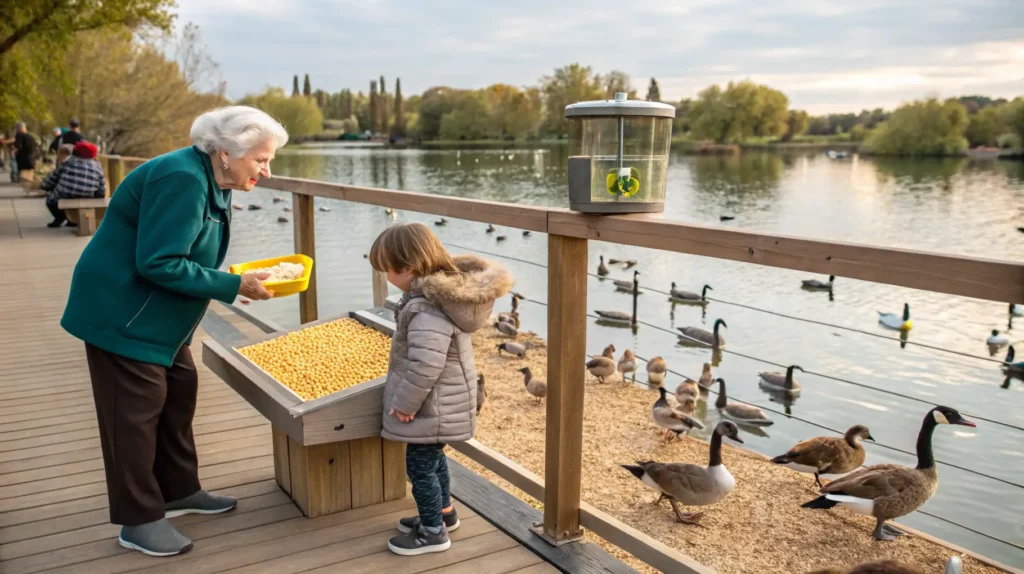
Photography Tips for Success
Technical Considerations:
- Early Morning Light: Golden hour provides flattering illumination
- Overcast Days: Even lighting reduces harsh shadows
- Telephoto Lens: 300mm+ recommended for distant subjects
- Tripod: Useful for wildlife portraits and long exposures
Compositional Advice:
- Rule of Thirds: Place animals along grid lines
- Eye Contact: Focus on the nearest eye for compelling portraits
- Behavior Shots: Anticipate and capture natural behaviors
- Environmental Context: Include habitat in wider shots
Ethical Wildlife Photography:
- Maintain safe distances from all animals
- Never use calls or sounds to attract wildlife
- Respect barriers and restricted areas
- Flash photography is permitted but use discretion
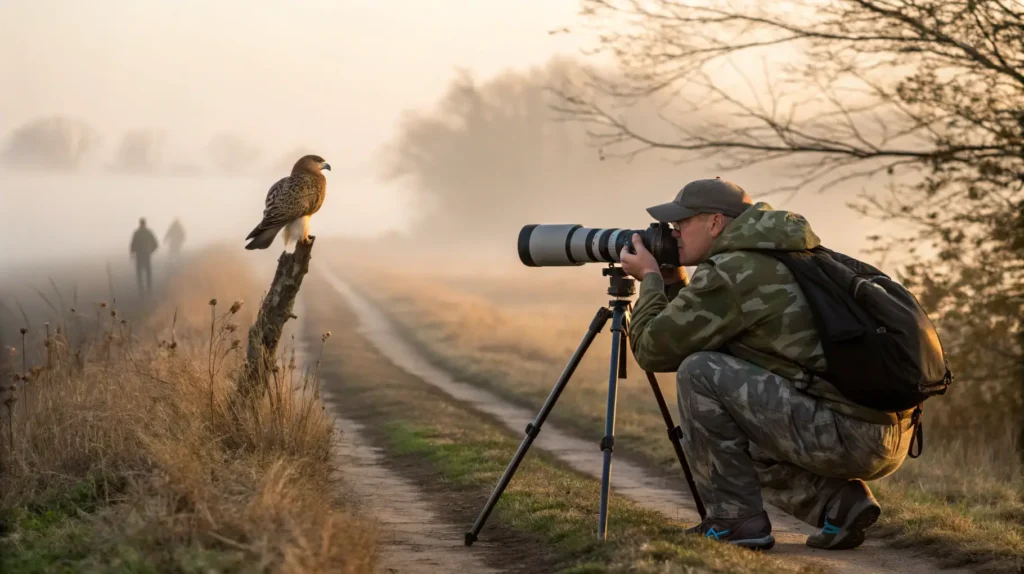
For The Kids: Family-Friendly Highlights
bay beach wildlife sanctuary green bay excels as a destination for families with children of all ages.
Kid-Friendly Features
- Interactive Discovery Stations: Throughout trails with hands-on learning
- Scavenger Hunts: Pick up sheets at the education center
- Junior Naturalist Programs: Seasonal educational activities
- Easy Walking Surfaces: Stroller-friendly paved paths
- Picnic Areas: Adjacent to playground equipment at Bay Beach Park
Most Engaging Animals for Children
- Wolves: Dramatic and exciting to observe
- Otters: Playful behaviors captivate young audiences
- Ducks & Geese: Feeding interaction creates lasting memories
- Birds of Prey: Impressive size and features
- Mountain Lions: Big cats always fascinate kids
Educational Value
- Ecosystem Understanding: Visual representation of food webs
- Conservation Messages: Age-appropriate environmental education
- Native Species Awareness: Connect children to local wildlife
- Respect for Nature: Firsthand experience with wild animals
Facilities & Events
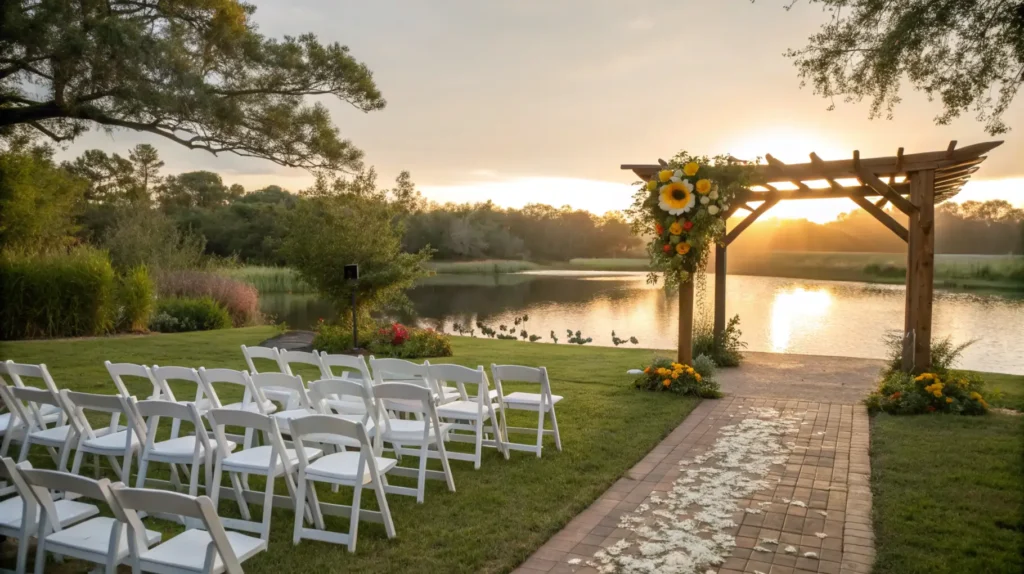
Dining and Picnic Options
While Bay Beach Wildlife Sanctuary doesn’t have on-site dining facilities, multiple options exist nearby.
On-Site Options
- Vending Machines: Basic snacks and beverages at the education center
- Picnic Tables: Several located throughout the grounds
- Bring Your Own: Designated picnic areas welcome outside food
Nearby Dining (Within 5 minutes)
- Bay Beach Amusement Park: Concessions and food stands
- Wequiock Falls Golf Course: Restaurant with bar service
- Sunset Park: Picnic facilities with lake views
Restroom Facilities
- Nature Education Center: Main facility with family restrooms
- Trail Access Points: Seasonal portable facilities available
- Accessibility: All permanent restrooms fully accessible
Event & Banquet Facilities
Bay Beach Wildlife Sanctuary offers unique venue options for special occasions.
Available Spaces
- Nature Education Center: Indoor space for meetings and small events
- Outdoor Pavilions: Covered areas for larger gatherings
- Ceremony Sites: Scenic backdrops for weddings
- Educational Programs: Customized group experiences
Rental Information
- Capacity: Various sizes accommodating 25-150 guests
- Amenities: Tables, chairs, basic audio/visual equipment
- Catering: Outside caterers welcome (approved list available)
- Booking: Contact Brown County Parks for availability and pricing
Special Events Calendar
Bay Beach Wildlife Sanctuary hosts various educational and community events throughout the year.
Annual Events
- Spring Migration Festival (May): Guided walks, expert presentations
- Wildlife Photography Workshops (Various dates): Professional instruction
- Family Nature Days (Monthly, summer): Kid-focused activities
- Fall Colors Tours (October): Guided hikes highlighting autumn changes
- Winter Wildlife Tracking (January): Snow-dependent learning experiences
Frequently Asked Questions
Is Bay Beach Wildlife Sanctuary Free?
Yes, admission to Bay Beach Wildlife Sanctuary is completely free for all visitors. The sanctuary operates on donations, grant funding, and Brown County support. Voluntary donations are appreciated at the Nature Education Center.
Are Dogs Allowed at the Wildlife Sanctuary?
No, pets are not permitted within Bay Beach Wildlife Sanctuary for the safety and well-being of both the wildlife and your pets. Service animals are allowed with proper identification. Consider that Bay Beach Park (adjacent) does allow leashed dogs in certain areas.
How long does it take to walk through Bay Beach Wildlife Sanctuary?
A typical visit ranges from 1-3 hours depending on your pace and interest level. Plan for: Quick visit: 1 hour (main trail and exhibits) Comprehensive visit: 2-3 hours (all trails, education center) Photography/birding: 3+ hours (depending on wildlife activity)
Can you feed the animals at Bay Beach Wildlife Sanctuary?
eeding wildlife is strictly prohibited except for the designated duck/goose feeding area at the lagoon. Approved corn is available for purchase ($1) from dispensers. This policy protects both wildlife health and visitor safety.
What animals will I see at the sanctuary?
You’ll encounter over 255 animals representing 75+ species, including: Gray wolves Mountain lions Bald eagles Great horned owls River otters Red foxes White-tailed deer Various waterfowl Animal visibility varies by season, weather, and time of day.
Is Bay Beach Wildlife Sanctuary open in Winter?
Yes, the sanctuary remains open year-round with adjusted hours (typically 9 AM-4 PM in winter months). Some trails may have limited access due to ice or snow conditions. Winter offers unique opportunities to see cold-weather adaptations and different bird species.
Is the Wildlife Sanctuary the same as Bay Beach Amusement Park?
No, they are separate facilities. Bay Beach Wildlife Sanctuary is operated by Brown County Parks and focuses on wildlife conservation and education. Bay Beach Amusement Park is a separate entity offering carnival rides and games. They share the same general location but have different entrances and purposes.
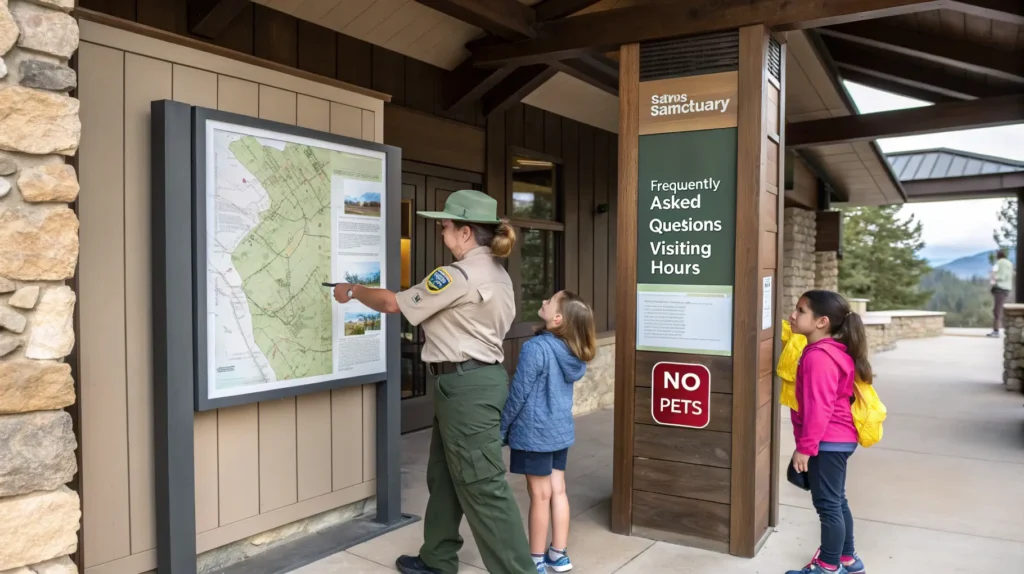
Conclusion: Your Adventure Awaits
Bay Beach Wildlife Sanctuary represents one of Green Bay’s most valuable natural resources—a place where conservation meets education, where families create lasting memories, and where native Wisconsin wildlife thrives in carefully managed habitats.
Whether you’re seeking a peaceful morning walk, an educational family outing, wildlife photography opportunities, or simply a connection with nature, the sanctuary delivers experiences that exceed expectations. The fact that all of this beauty and learning happens completely free makes it even more remarkable.
As you plan your visit to Bay Beach Wildlife Sanctuary, remember that you’re not just observing wildlife—you’re participating in a conservation success story. Every visit, every photo shared, and every dollar donated supports the sanctuary’s crucial mission of wildlife rehabilitation, education, and habitat preservation.
Pack your camera, bring your curiosity, and prepare to discover why this hidden gem has captured the hearts of locals and visitors for decades. Bay Beach Wildlife Sanctuary isn’t just something to do in Green Bay—it’s an experience that connects you to the natural world in profound and meaningful ways.
Ready to visit? Share your own Bay Beach Wildlife Sanctuary experiences in the comments below. What was your favorite animal encounter? Which trail provided the best wildlife viewing? Your insights help future visitors make the most of this incredible destination.
Have questions not covered in this guide? Contact Bay Beach Wildlife Sanctuary directly at (920) 391-3671 or visit their website for the most current information.
About the Author
This comprehensive guide was researched and written by a dedicated nature enthusiast who has visited Bay Beach Wildlife Sanctuary over 50 times across all seasons. With extensive experience in wildlife photography and environmental education, the author combines personal observations with factual information to provide readers with the most helpful and accurate guide possible. All recommendations are based on firsthand experience and genuine appreciation for this remarkable conservation facility.

